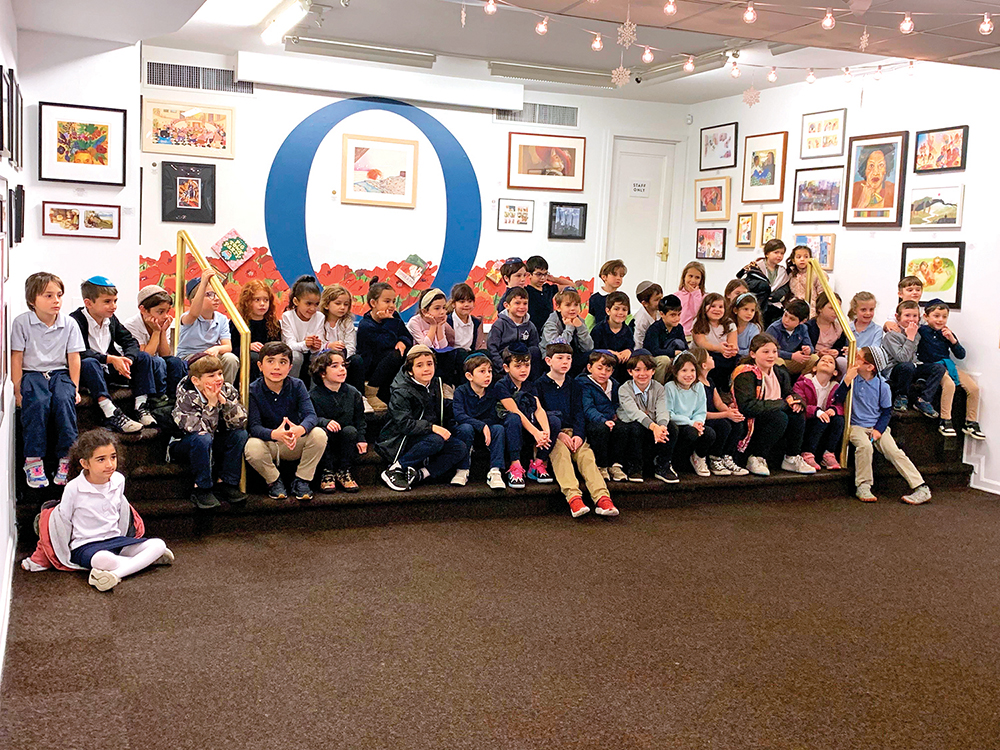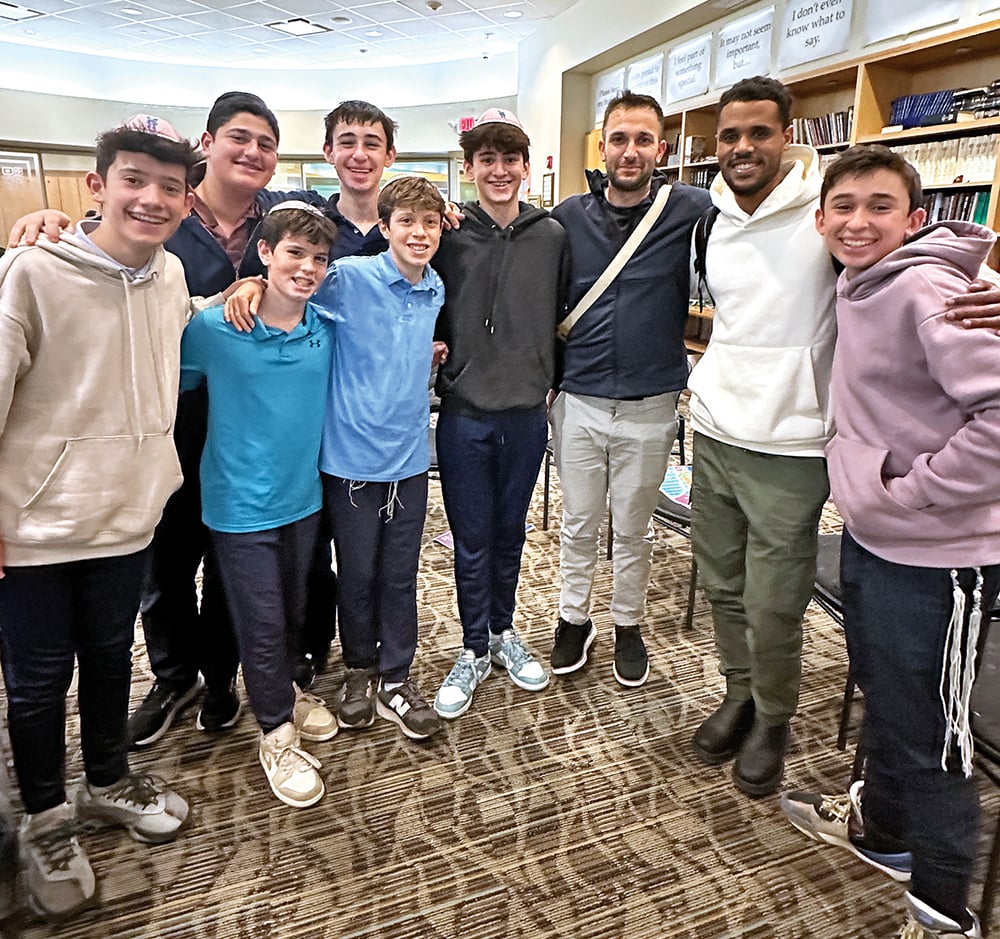At the end of World II, the surviving Jews in the American Zone of Occupation “had an almost obsessive will to live normally again, to regain their full rights as free men,” observed sociologist Dr. Leo Srole. He found “their energies and talents have been dramatically exhibited in the vigorous communities they have created in the camps, despite scant material resources and highly abnormal environmental conditions… It deserves the world’s admiration.”
Observant Jewish survivors, who were displaced persons (DPs), were in need of religious articles: fringed garments (tzitzit) prayer shawls, phylacteries (tefillin), candles for candle lighting, daily and holiday prayer books, the Torah and religious texts. There were very few of these items available. In the late 1930s the Nazis began confiscating Jewish books and artifacts in Germany. During the war, the Nazis extended the operation, using German military forces and other Nazi agencies to seize Jewish books, archives and ritual objects wherever they went—from “occupied Ukraine to the French-Spanish border, and from Greece to the British Isle of Man,” according to Colonel Seymour J. Pomrenze, the first director of the Offenbach Archival Depot (OAD), the main Allied collection point for books and archival material looted by the Nazis.
Established on March 2, 1946, the OAD had 2,000,000 books and other “identifiable materials” that were returned and distributed to the survivors by August 1947. The American Jewish Distribution Committee (JDC) received 24,000 volumes on loan, to distribute to the DPs, Pomrenze reported.
These “supplies” from the JDC in Europe and the U.S. were insufficient to meet the needs of the observant survivors. Rabbi Abraham Kalmanowitz, president of the Mirrer Yeshivah in New York and a leader in Agudath Harabonim and in the Vaad Hatzalah, tried to fill this vacuum. The Vaad Hatzalah had been established in November 1939 to save rabbis and yeshiva students in Poland and Lithuania from the Nazis. After the war, the Vaad, with the financial backing of William Alpert, sent Rabbi Nathan Baruch, a newly minted rabbi, to direct their relief and spiritual rehabilitation program for observant Jews in Germany.
Rabbi Abraham Kalmanowitz asked General John Hilldring, assistant secretary of state for occupied areas, to help him publish “200,000 Bibles and Prayer Books in the U.S. Zone of Germany for use of Jewish children in Western Europe.” Rabbi Kalmanowitz needed a permit for paper, priority for using electricity, an export license, and a permit to send his personal representatives to the U.S. Zone of Germany to supervise the printing and distribution of the copies. General Lucius Clay, military governor of Germany, rejected his request, historian Gerd Korman said, because there was an acute shortage of paper in late 1947 and only vital government documents could be published.
Rabbi Baruch, now the director of the Vaad Hatzalah in Germany, refused to accept this excuse and began exploring ways to publish religious texts (sefarim) on his own. The need to print the Talmud, the oral tradition, became especially important for the students who were being taught in the yeshivas that were established in various DP camps. In addition, in 1947, the rabbinate of the Yishuv (the Jewish settlement in Palestine), led by Rabbi Dr. Isaac Herzog, and the Union of Orthodox Rabbis of the United States and Canada, and the rabbinate of England united to make the Daf Yomi (daily folio page of the Talmud) a universal part of observant Jewish life. The Jews of Germany responded with enthusiasm, but few had any copies of the Talmud.
At the Congress of the Agudath Israel in Europe in 1923, Rabbi Meir Shapira of Lublin had proposed that Jews all over the world study the same page of the Talmud simultaneously—as a sign of a unifying commitment to Judaism and Jewish learning. The proposal was accepted, and a special calendar was created.
When Rabbi Baruch approached the military authorities for authorization and assistance to publish religious material, they responded that the function of the Army was not to be the nursemaid to the DPs but to keep the order and to be a buffer against Russian encroachment. Rabbi Baruch was not deterred. He turned to those who had access to the Army warehouses. Since the military had an abundance of supplies—an assessment not shared by General Clay—Rabbi Baruch thought he might be able to “barter” for his supplies. Among his contacts was a Jewish girl working for the military and some non-Jewish quartermasters who were sympathetic and willing to provide paper and materials.
One of Rabbi Baruch’s contacts worked in the Army Post-Exchange (PX) and purchased whiskey for him. A number of officers who didn’t need their alcohol rations sold their rations to Rabbi Baruch at a fraction of their worth. The same was true of others who had coffee and cigarette rations. Thus, coffee, whiskey and cigarettes were traded for paper, ink, printing and binding. The rabbi and his associates found a photo-offset processing plant and went into the now financially viable business of publishing prayer books and other religious texts.
As soon as the books were printed and bound they were sent to the DP camps and to leading rabbis and scholars throughout the world. Some people in Europe came to the Vaad office in Germany to collect their copies. Pincus Schoen, executive director of the Vaad Hatzalah, asked that prominent donors and every Orthodox rabbi in the United States receive sets of these books (sefarim) to induce them to fund the project. Regrettably, there was no quid pro quo. Baruch never recalled receiving any additional funds from the Vaad or anyone else who received copies of these special editions.
To meet the demand for copies of the Talmud, the Vaad printed and distributed 10,000 conveniently sized pocket editions. By the end of 1947, the Vaad published some 240,000 religious texts and distributed them to camps and to the rest of the world Jewish community. These included siddurim, Tehillim, Haggadahs, Megillat Esther, Pirkei Avos, Mesilas Yesharim, Or Israel, Shev Shemateso, Kesses Hasofer, Yiddish Leben, Kitzur Shulchan Aruch, Shagath Aryeh, Taharas Hamishpacha, and the Bible.
Among those who received books published by Rabbi Baruch’s makeshift publishing company were: American generals in Europe, the Far East and the United States; American admirals; U.S. Secretaries of War, Labor, Treasury; the mayor of New York; the Secretary-General of the United Nations; U.S. Supreme Court Justices and a number of Jewish celebrities. After thanking Rabbi Baruch for “remembering” him “with such a splendid gift,” General Dwight D. Eisenhower, then the chief of staff of the War Department, said he would pass along his report on the Vaad “to the appropriate agency of the War Department staff for information and study.”
Dr. Alex Grobman is senior resident scholar at the John C. Danforth Society, member of the Council of Scholars for Peace in the Middle East.













